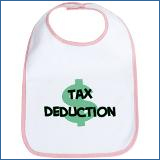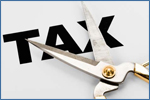-
Medical Expenses
| |
| You can claim eligible medical expenses you or your spouse or common-law partner paid for: |
 |
| • yourself; |
| • your spouse or common-law partner; and |
| • your or your spouse's or common-law partner's children born in 1994 or later. |
| Medical expenses for other dependants also can be claimed for the part |
| • of eligible medical expenses you or your spouse or common-law partner paid for the following persons who depended on you for support: |
| • your or your spouse's or common-law partner's child who was born in 1993 or earlier, or grandchild; or |
| your or your spouse's or common-law partner's parent, grandparent, brother, sister, aunt, uncle, niece, or nephew who was a resident of Canada at any time in the year. |
| People miss claiming common expenses like fees paid to medical practitioners such as speech-language pathologists, occupational therapists and acupuncturists. Ambulance fees are expensive and claimable; so is the cost of tutoring services for the learning disabled. |
-
Moving Expenses
| |
| If you have moved at least 40 kilometers closer to a new work location, you can claim the costs of selling your home, including real estate commissions and penalties for paying off a mortgage. Even the costs of a vacant old residence, to a maximum of $5,000 is allowed. The costs of moving to the new location and temporary living accommodations for up to 15 days can be claimed too. But, as this is often a five-figure number, expect to be audited. |
 |
| |
-
Maximize Baby Deductions
| |
| Claiming the child-care deduction can be complicated. Should it be the higher or lower earner who claims it? It depends, actually. Usually itís the lower earner, but if there is a separation during the year, or the lower earner is going to school, or hospitalized, itís possible the higher earner may make the claim. The maximum dollar amounts claimable $4,000, $7,000 or $10,000, which depend on the childís age and health. |
 |
| |
-
Employment Deductions
| |
| If you get a T4 slip and are required to pay out-of-pocket expenses as part of your employment contract, a deduction may be possible on your tax return. Note that you must be required to pay your own expenses under your contract of employment and the employer must certify this on Form T2200 Declaration of Conditions of Employment. Expenses can include accounting and legal fees, motor vehicle expenses, travel costs, parking, supplies used up directly in your work, office rent or certain home office expenses as well as amounts paid to an assistant, which could be a family member. |
 |
| |
-
Principal Residence Is tax Exempt
| |
| The increase in value of a property designated as a principal residence is tax exempt. Itís easy to qualify your properties if you own more than one - just live in each for a couple of days each year. You can have more than one residence that qualifies, but only one can be designated as your principal residence for any given year. The choice of which is made on T2091 when you dispose of a residence. But if youíve been flipping residences for profit, you could be assessed as being in the business of buying and selling homes. Be ready to defend this by showing your intention in acquiring the properties and the circumstances around the reasons for the dispositions. |
 |
| |
-
RRSP Home Buyers Plan
| |
| The Home Buyersí Plan is an RRSP feature that allows first time home buyers to withdraw up to $25,000 from their RRSP tax-free, for the purpose of buying or building a home. Note that you qualify as a first time home owner if you move to accommodate a disabled person. The withdrawals may be a single amount or the taxpayer may make a series of withdrawals throughout the year as long as the total does not exceed the $25,000 maximum. |
 |
| |
-
Minimize Tax On Severance
| |
| If youíve lost your job, your severance package can help but it can also put you into a high tax bracket because itís usually paid in a lump sum. One way to reduce your taxes is to maximize your RRSP contribution room. Another is to write off your legal fees if you fought a wrongful dismissal. |
 |
| |
-
Write Off Interest
| |
| You can write off the interest on your full investment loan, even if your portfolio has diminished in value, providing there was a reasonable expectation of income from property: interest and dividends for example. Also, be sure to take advantage of capital losses to reduce capital gains of the current year. Unabsorbed losses may be carried back or forward to offset capital gains in the carry-over year. |
 |
| |
-
Pension Income Splitting
| |
| If you received a pension from your company plan or started periodic withdrawals from your RRSP or RRIF this year, you may elect to transfer up to 50 per cent of your pension benefits to your spouse. This can be very lucrative. Those receiving periodic pension benefits from employer-sponsored plans can take advantage of pension income splitting at any age; if periodic income comes from RRSPs, RRIFs or other annuities, youíll have to wait to age 65 to income split. |
 |
| |
-
Tax Installment Payments
| |
| If you pay income taxes by making quarterly payments, review your payment requirements. If your income has dropped since you last filed a tax return, you can reduce your payments. Simply write a letter to let CRA know you will estimate installments payable on current year. |
 |
| |
-
Tax Credits For Childrens Activities
| |
| There are new amounts to be claimed on the tax return for enrolling your children in the arts or sports activities. You can claim public transit charges for them to get there too. Because the Childrenís Arts Amount is new, youíll need to remind yourself to dig out the receipts. |
 |
| |
-
Deductions For Artists & Writers
| Employed artists and musicians can claim expenses for composing dramas, musicals or literary works, performing and creating works of art. Expenses can include things like ballet shows, art supplies, computer supplies and home office costs. The maximum claim is 20 per cent of net income or $1,000. Musicians can also make claims for the maintenance, rental, insurance and capital cost allowance for musical instruments. |
 |
| |
|











